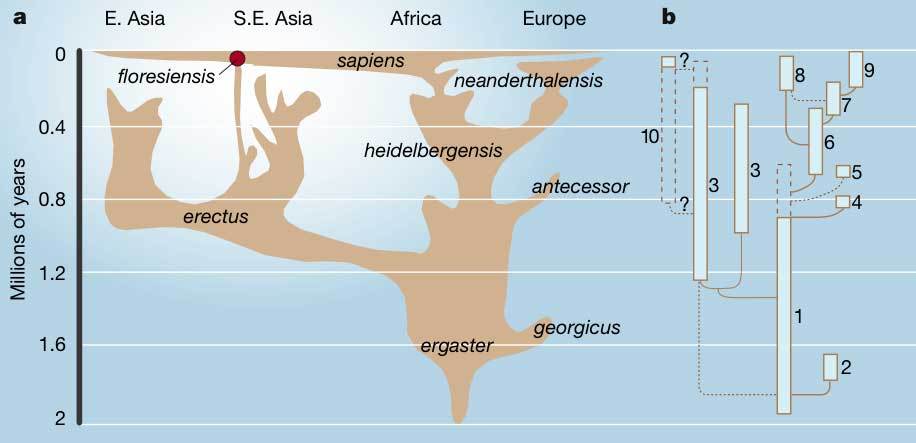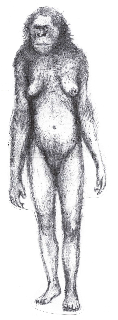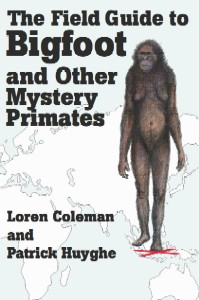
March 12, 2008
The discovery that Homo floresiensis survived until so very recently, in geological terms, makes it more likely that stories of other mythical, human-like creatures such as Yetis are founded on grains of truth….Now, cryptozoology, the study of such fabulous creatures, can come in from the cold.Henry Gee, editor of Nature, “Flores, God and Cryptozoology,” 2004 editorial.
The time is assuredly upon us to expand the Hobbit hunt. The systematic study of Proto-Pygmies in Oceania seems tied to the probable findings of future fossil evidence for Homo floresiensis beyond Flores. What is being discovered in Palau appears to be the latest reinforcement for such thoughts.
The 900-2,800-year-old “insular dwarf” remains from Palau seem to confirm traditions of “Little People” 2 or 3 feet tall from various Pacific islands. The best-known of these Pacific “Little People,” of course, are the Menehune of Hawaii. They are usually described as 2 to 3 feet tall, with short, stout, hairy, and quite muscular bodies, red-skinned faces, big eyes hidden by long eyebrows, low protruding foreheads, and short thick noses.
However, Menehune-like dwarfs have also been reported from other Pacific islands. Thus, six witnesses in a Fijian mid-afternoon encounter in 1975 described seeing eight figures, 2 feet tall and covered with black hair, run and disappear behind some bushes (Fiji Times, July 19, 1975, cited by Loren Coleman and Patrick Huyghe, The Field Guide to Bigfoot and Other Mystery Primates , p. 148).T. Peter Park, 2008

The 3-feet-tall Homo floresiensis, living on Indonesia’s Flores Island, perhaps do exist today as the small, hairy ebu gogo, the Proto-Pygmies of Flores Island folklore. Homo floresiensis, while connected in the media in 2004, with Sumatra’s orang pendek, probably has a more direct link with the more fully hairy hominid examples, such as Sri Lanka’s nittaewo.
The more proper attention would be most important in the direction of Proto-Pygmy folklore. On Flores, for example, the legendary humanlike animal called Ebu Gogo, known for small body size, inarticulate speech and an unusual bipedal gait appears to be a reflection of Homo floresiensis-human encounters.


The male National Geographic painting of the first Homo foresiensis find, compared to Richard Klyver’s sketch of the Flores woman. The first fossil discovery of Homo floresiensis was of a female, not a male.

The front cover of The Field Guide to Bigfoot and Other Mystery Primates is illustrated with a drawing of Homo floresiensis by wildlife artist Richard Klyver, who studied for seven years among chimpanzees in Africa.
Local natives on Flores have one hundred year old legends of a small hairy people, the Ebu Gogo, and clues from these tales will be employed to find new caves to explore for evidence of their former little habitants. While Sumatra’s Orang Pendek has been mentioned in the same context as the media nicknamed ‘Hobbits’ of Flores, the more relevant cryptids are not anthropoids, but the fully manlike ones, such as the Nittaewo, the three feet tall hairy hominids of ancient Ceylon (Sri Lanka) — mentioned by Pliny in the first century — who were said to exist to the end of the 18th Century. It is time to look again at reports of little people, with an eye to the discovery of their subfossil remains and living existence, from Sri Lanka to the South Pacific.Loren Coleman, 2004
About Loren Coleman
Loren Coleman is one of the world’s leading cryptozoologists, some say “the” leading living cryptozoologist. Certainly, he is acknowledged as the current living American researcher and writer who has most popularized cryptozoology in the late 20th and early 21st centuries.
Starting his fieldwork and investigations in 1960, after traveling and trekking extensively in pursuit of cryptozoological mysteries, Coleman began writing to share his experiences in 1969. An honorary member of Ivan T. Sanderson’s Society for the Investigation of the Unexplained in the 1970s, Coleman has been bestowed with similar honorary memberships of the North Idaho College Cryptozoology Club in 1983, and in subsequent years, that of the British Columbia Scientific Cryptozoology Club, CryptoSafari International, and other international organizations. He was also a Life Member and Benefactor of the International Society of Cryptozoology (now-defunct).
Loren Coleman’s daily blog, as a member of the Cryptomundo Team, served as an ongoing avenue of communication for the ever-growing body of cryptozoo news from 2005 through 2013. He returned as an infrequent contributor beginning Halloween week of 2015.
Coleman is the founder in 2003, and current director of the International Cryptozoology Museum in Portland, Maine.
Filed under Books, Breaking News, Cryptomundo Exclusive, Cryptotourism, CryptoZoo News, Cryptozoologists, Cryptozoology, Folklore, Homo floresiensis